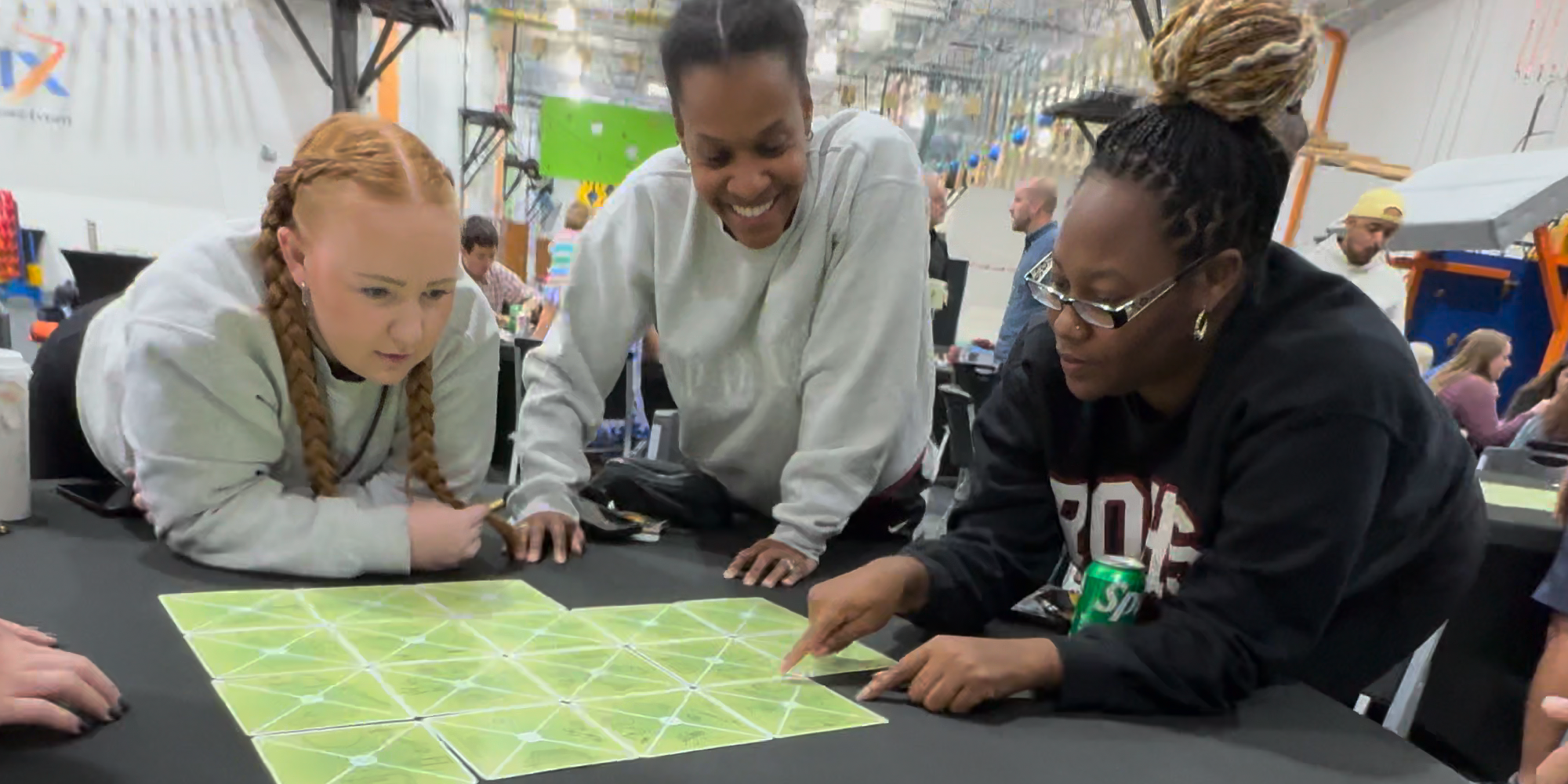Here is what my planning process for facilitating a group often looks like: I do an initial planning session, feeling great. I know my content, where I want to go with the training, and who I’ll be working with. Time to sit down and codify the agenda. Then, about ten minutes in, I draw a blank – so I check Facebook, read a few emails, decide that inbox zero is totally something I should do, right now.
An hour later, I’m emailing and growing increasingly aware that I’m still avoiding my agenda. After (briefly or not so briefly) lamenting my procrastination, I finally turn to the process of getting unstuck.
In 2019, I did about thirty workshops, and most of those planning sessions went as described above, so I had a lot of practice getting myself unstuck. While it feels like a miracle at the moment, it’s often simple actions that I’ve found are consistent and reliable in getting me back to a happier, much more productive mindset.
1. Phone A (Facilitator) Friend
If you’re solo facilitating and feeling stuck, try phoning a friend. Specifically a facilitator friend. Facilitator friends have likely been there too (where you are, in the stuck place) so the empathy will be automatic. Not only that, but they are able to speak the same language (“Oh you need an icebreaker? A closing activity?”) and can bring their own creative ideas to the table.
Sometimes I find myself resistant to this strategy, held back by embarrassment, imposter syndrome, or self-talk that says “you’re being a burden.” What often gets me to make the call anyway are a few things I remind myself: that people like to help, that people love giving advice, and that my friends often have great ideas—particularly when there is nothing at stake for them. When I tap into that knowledge, I end up making a call.
As Amanda Palmer says in The Art of Asking, “If you want to make someone your real friend, ask them for a favour.”
2. Get In Facilitator Mode
When I facilitate, I never sit at my computer. Often, I’m instead standing at a whiteboard or flip-chart. I have found that putting myself in the same physical shape and space, standing at a flip-chart or whiteboard with a marker in hand, activates my brain into “we are facilitating” mode and jumpstarts my creativity.
Consider putting yourself in the same physical body-shape that you’re in when you’re facilitating, and see what happens. Might feel goofy, but when it works you won’t give that much thought.
3. Use Your Own Activities
We know activities help our participants unlock new ideas or bring useful thoughts to the forefront; I’ve found they can do the exact same thing for me. Here are three activities I use to unstick my planning process.
- Sticky Note Generator
Use this structure when you know the goals of your workshop and you want to generate activity ideas. Start by writing out your goals, one per sticky note. Then take a new stack of stickies (personally I’d vote for a different colour of sticky) and consider all the possible activities you think could work, again one per sticky. Next, play with which goals should be in which order and play around with what activities might help you satisfy each goal. Continue to shuffle until you get a clearer picture of the workshop. Bonus: you’ll be well on your way to modularly planning your facilitation.
. - Mindmapping
Use this activity when you have too many different ideas and are having a hard time tracking what goes where. Starting with a mindmap will allow you to see the different strands, themes, and ideas while better understanding their relationship to each other. It’ll also allow you to put aside order or structure while keeping your thoughts organized and connected to each other.
. - Reverse Engineering
Use this activity you’re halfway through planning your facilitation and fear (or feel) you’ve lost the plot. I use this activity when I’m asking myself, “Why are we even doing this thing in the first place?” With Reverse Engineering, you start at the end so you have a chance to get clear on what you want to accomplish without worrying about all the messy steps of how to get there. After you’ve reconnected to the vision, which inevitably answers the “Why are we doing this?” question, it’s easier to work backward and identify how to make that happen.
4. Map Out What You Have
If you have at least a third of your facilitation planned out and find yourself stuck, try mapping out what you got. Use paper or a spreadsheet and see what activities you have and what their characteristics are.
I try to mix things up throughout my workshops, especially group size, energy levels, and whether an activity uses props or not. When I map my workshop out, it invites me to see how I can bring in more variety, which often gives me just enough direction to inspire new ideas.
5. Go For A Walk
Seriously. I’ll sit at my desk for hours with nothing, then finally go for a walk in exasperation and be flooded with ideas. It’s infuriatingly simple and it works. Basically every time I draw a blank this works. Plus even if it doesn’t, then you’ve gone for a walk and that’s a win in and of itself.
To draw a blank and feeling stuck sucks. But we can, quite literally, facilitate ourselves out of those moments.
If you have your own go-to strategies, let me know, I’d love to add them to my repertoire. I wish you the best of luck getting un-stuck and happy planning!
playmeo’s activity search engine is one option to dive into when planning group activities – you can search, filter and sort based on 35+ different criteria.
With thanks to Meg Bolger from Facilitator Cards.
This article first appeared on the Facilitator Cards Blog.

No Props? No Problem!
Get 150+ no-prop games & activities + exclusive 30-day free trial of playmeo. Scan QR codes to view activity videos, leadership tips, etc.

EMOJI Feeling Cards
50+ cards that portray a range of emotions from happy, sad, angry & confused. Ideal for building emotional literacy skills.

Wow, you’ve been busy!
You can open 1 more
activity for free.
Limit resets every 24 hours
or click below to get unlimited access.











Thank you, Meg!